Install Using Existing SQL Server
-
The Microsoft® SQL Server® Options screen it already defaulted to the option you need - I will use an existing SQL Server. Click Next to continue.
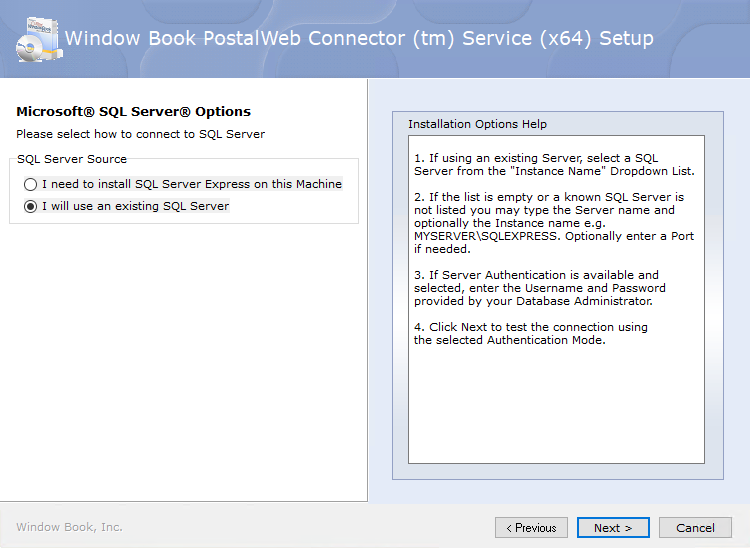
The Looking for Servers screen will appear.
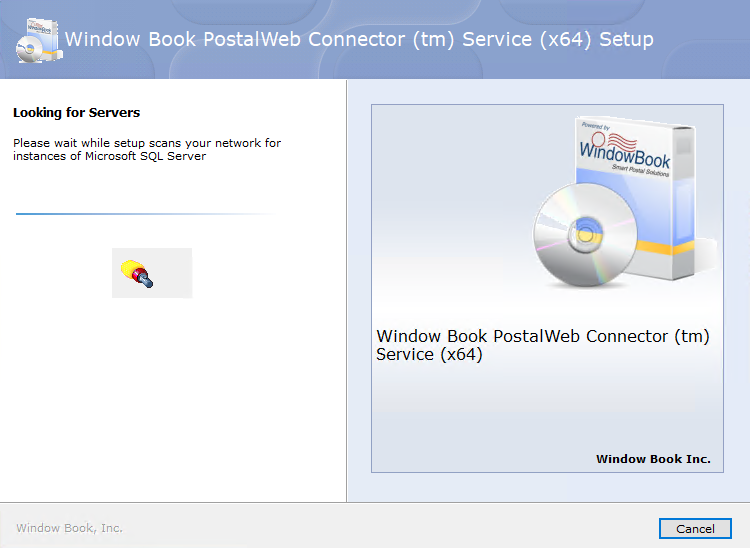
-
Once it finds a SQL Server, the Microsoft SQL Server Instances screen will appear, click the Instance Name drop-down, select the appropriate SQL Server Instance, and click Next.
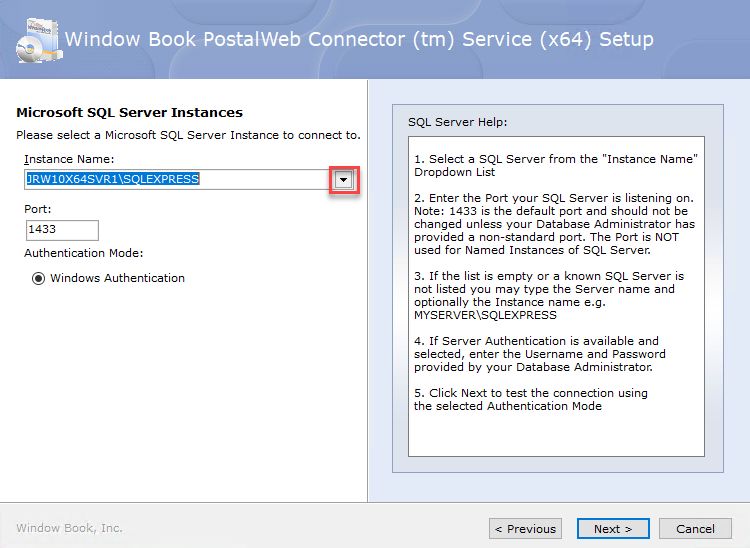
-
A Testing Connection screen will appear and then a Success dialog will appear. If the connection was successful, click OK to continue.
If the SQL Server Instance does not display in the list, you can type the instance in the field and attempt a connection to it.

-
The Choose the application folder screen will appear; click Next to continue.
Window Book strongly recommends using the default provided. However, if installed on a server where program files are on a different drive changing the drive letter to match is okay, but please leave the path structure.

-
The Choose Start Menu group screen will appear. It has the Start Menu group specified and provides other options to enable (for example, Create a Desktop Shortcut). Leave the Start Menu Group as the default and enable the other options as needed. When ready, click Next to continue.

-
The Logon Information screen will display. Here the installer sets up a service called the Window Book PostalWeb Connector service. Steps are shown below.
Leave the Start Service After Install checkbox deselected. If enabled, depending on the server or computer’s settings, errors may occur during installation that result in the installation not completing successfully.
Windows Service Logon Information:
The Computer/Domain Name will default to the name of the computer or server that PWC is installing on.
The Username will default to the login ID used to log onto that same computer, you will need to change the Username to your service-specific log on and then enter its Password.
See Service Log On Permissions for more information.
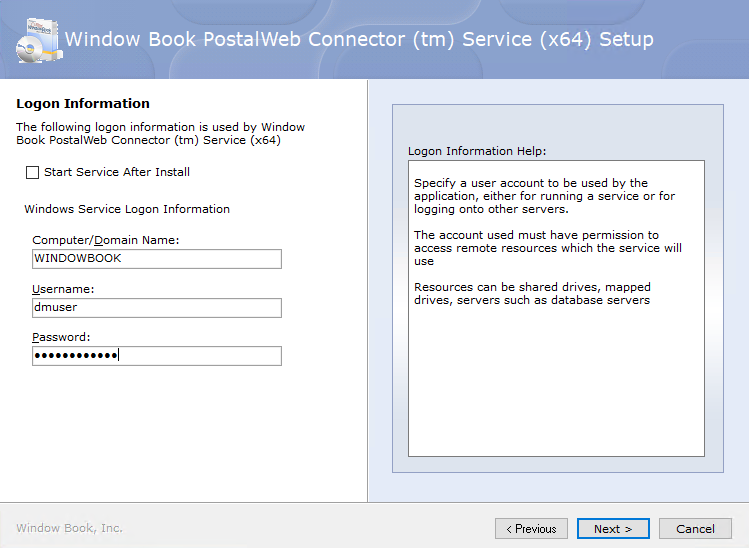
-
The Ready to update your system screen will appear; click Next to continue.

Please wait screen will display, and it will take a few moments to complete the setup.
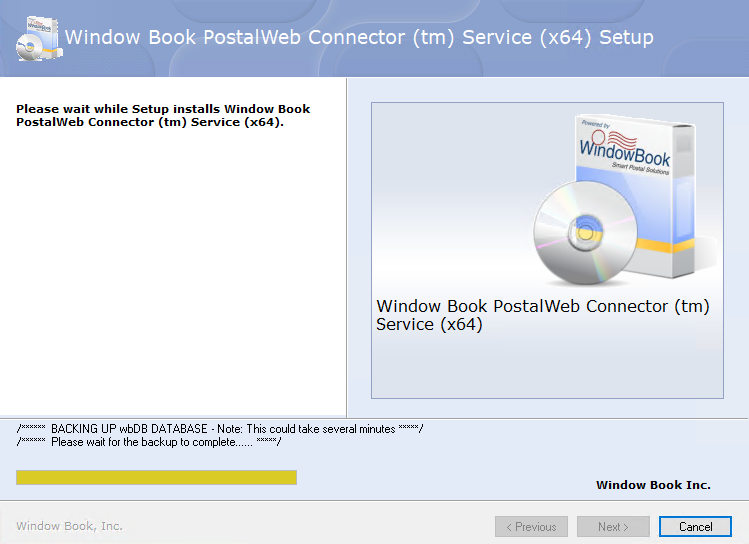
-
After a few moments, the Window Book Postal Web Connector (tm) Service (x64) Setup is Complete screen will appear, click Finish.

-
After a few moments, a Not Registered screen will display. Paste or enter your registration key and click Register.

-
The Update Registration screen will appear, enter the required information in the Customer Information section, then click Save.

-
The PWC Home screen will appear if you have not registered for PWN good idea to get started with this since the next step of installing SSMS takes time.
After you have created your Company's PWN site, you need to contact Window Book to turn on the services your Company subscribed to, and after this is complete, provision PWN in PWC. To create and register PWN, go to PostalWeb®(PWN) for Mail Service Providers (MSP) - Setup Guide or PostalWeb®(PWN) for Mail Owners (MO) - Setup Guide.
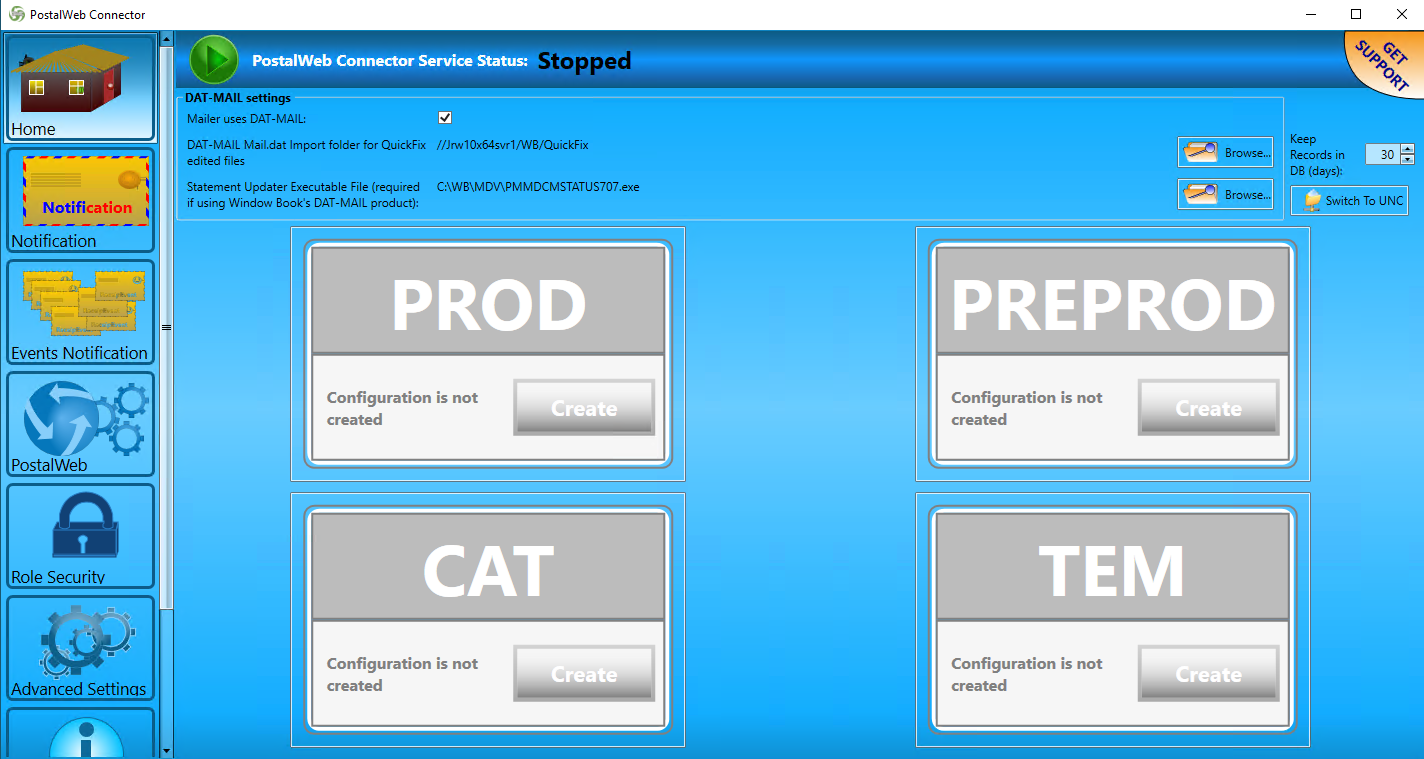
-
Open SSMS, it takes a few minutes to open. When opened, you should see your "server or computer name"\SQLEXPRESS where you just installed PWC shown in the Connect to Server window. If you do not, click the drop-down on Server Name and click Browse to select it. Click Connect.

-
In the Object Explorer pane, click the plus sign to the left of Security and right-click on your service account.
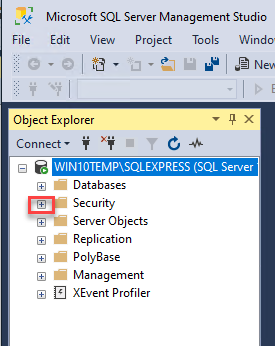
-
Now, click on User Mapping and select the wbdb checkbox, and in the Database role member for wbdb, select the db_securityadmincheckbox. And do the same for wbdbcla, shown in the second print screen below.

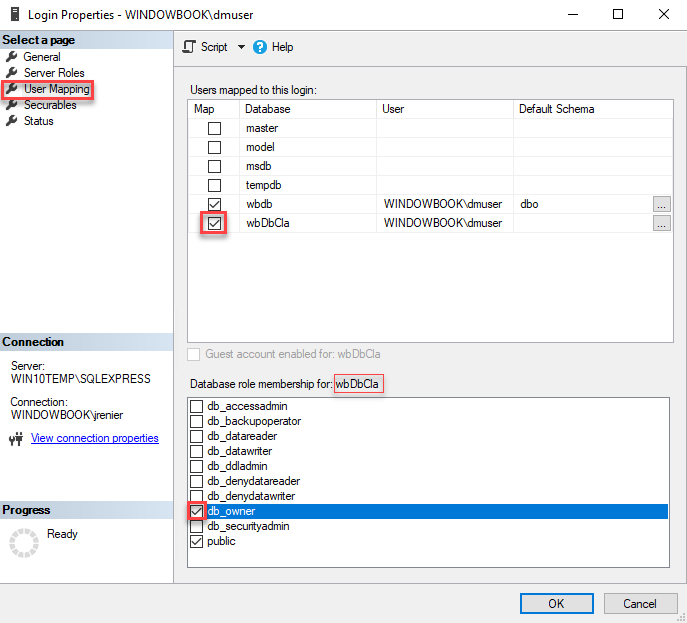
-
Click OK once both databases (wbdb and wbdbcla) user mapping is completed. The setup in SSMS is complete. Next, open PWC and create the PROD MDR Client. Creating the MDR Client needs to occur before installing PostalWeb Desktop Dashboard (PWDD) or DAT-PreCheck(DPC).

Continue PostalWeb Connector - Setup Guide's Home Screen Setup - Creating an MDR Client Site Configuration
See also
or